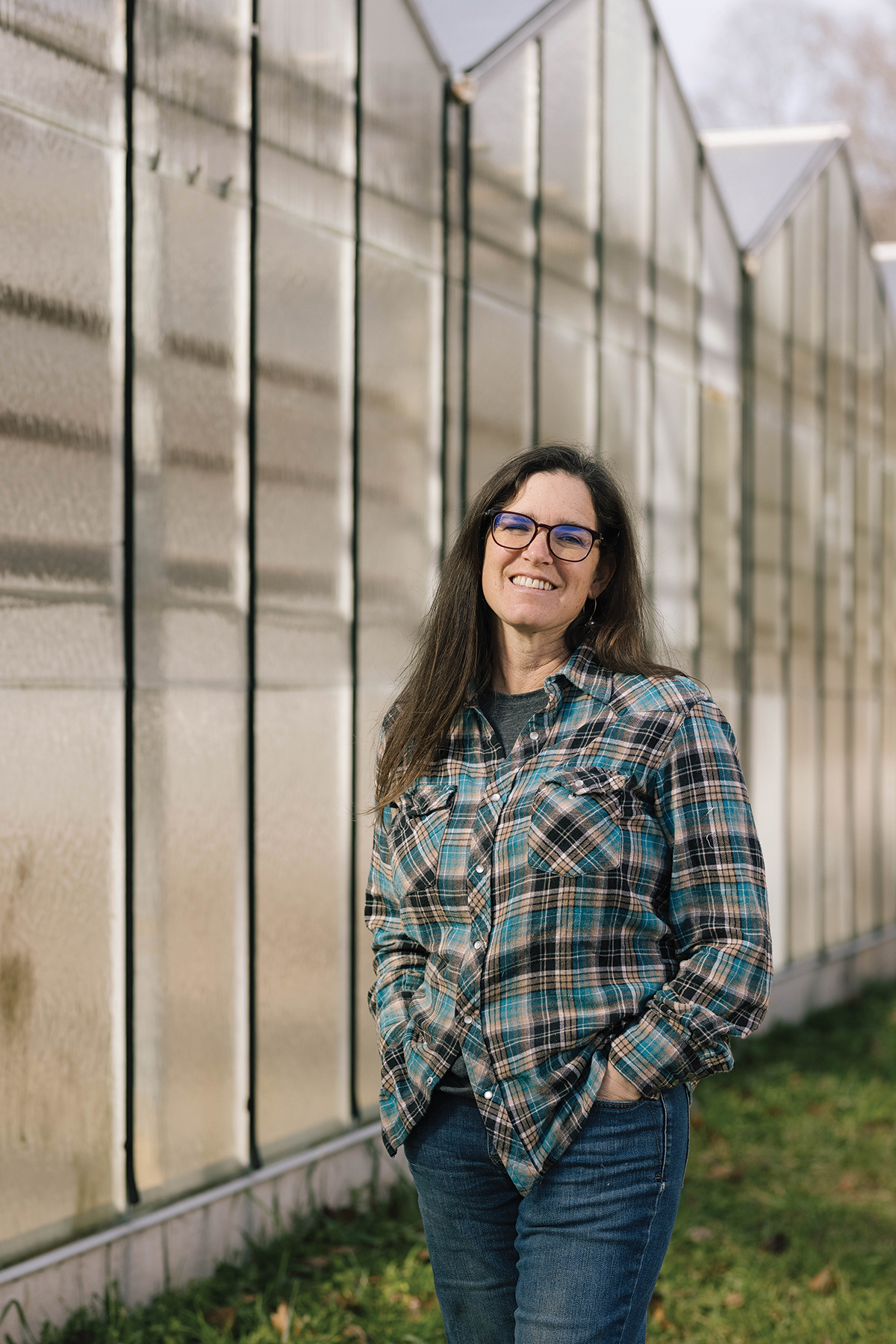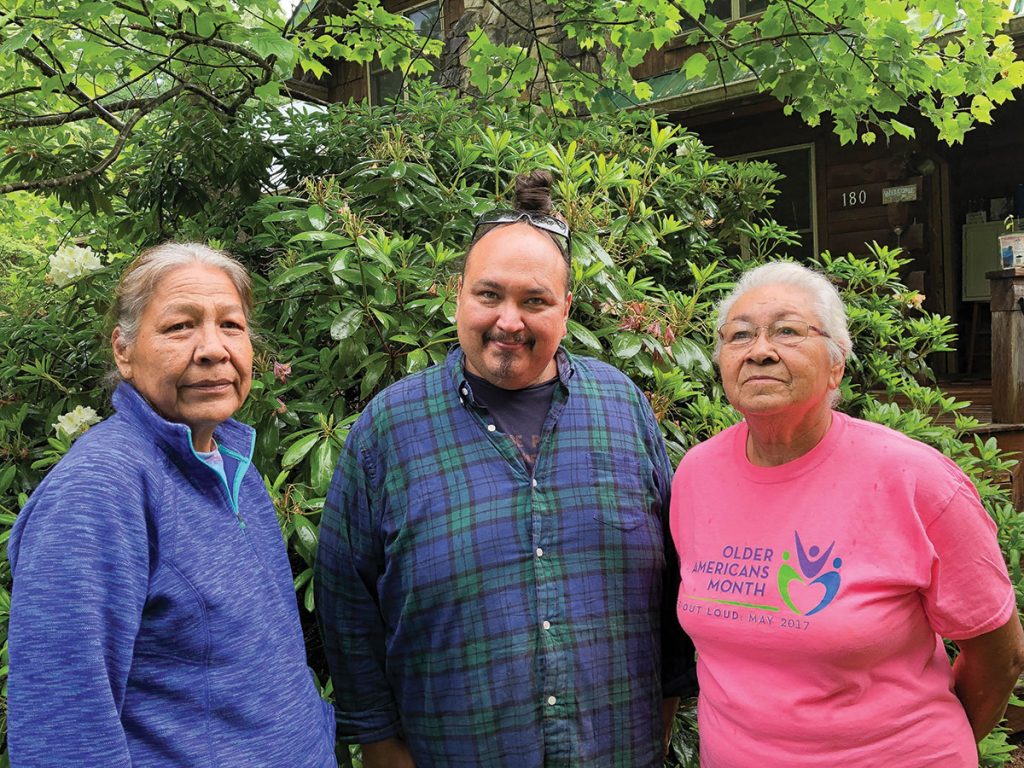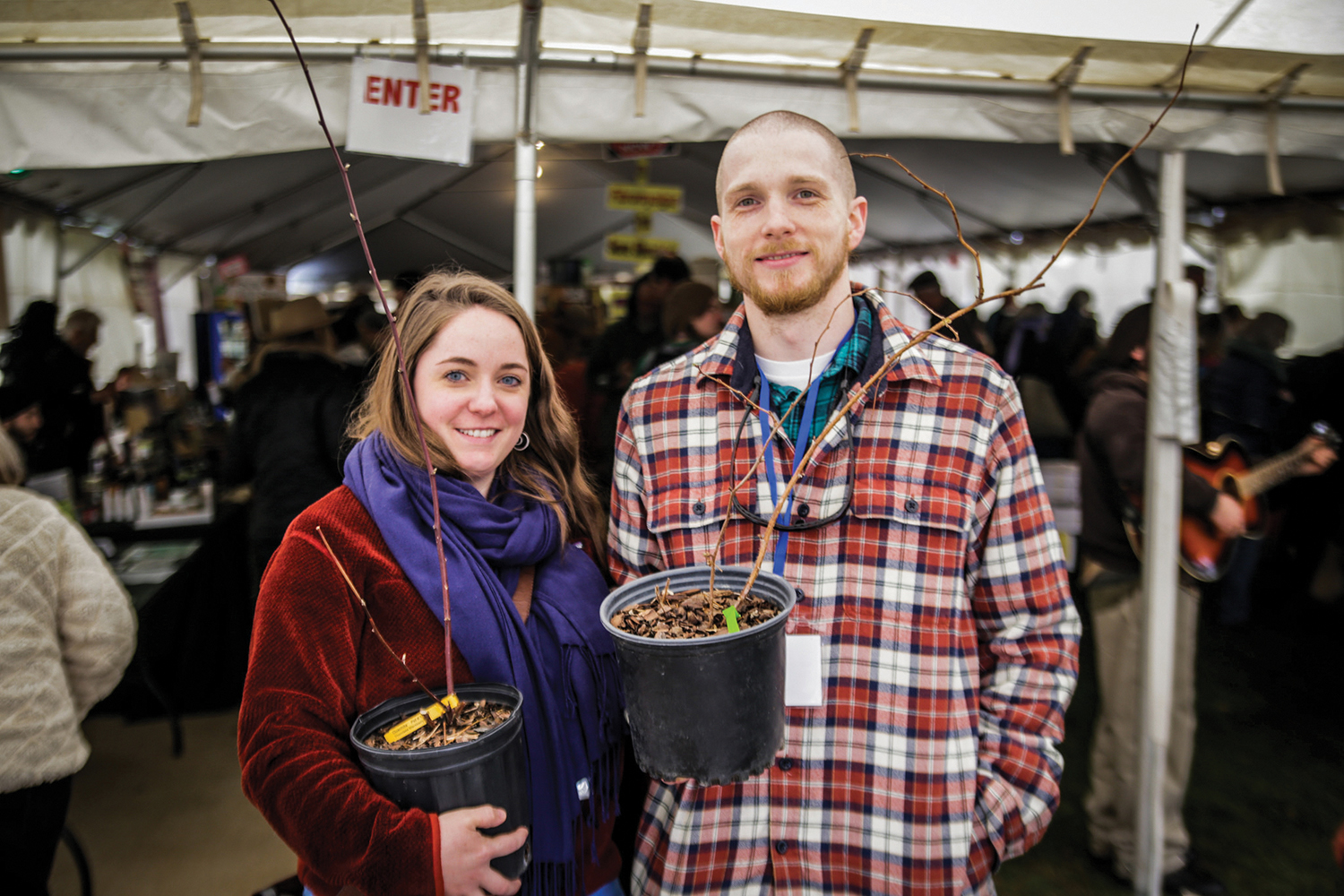The benefits of local eating should be common knowledge

Finland-born Mari Jyväsjärvi Stuart stays ready for the winter but looks forward to the spring.
Photo by Evan Anderson
There’s no excuse not to nurture our own foodshed, according to local urban homesteader and edible-landscape expert Mari Jyväsjärvi Stuart, who grew up in Finland, close to the Arctic Circle, where snow covers the ground half the year.
She reminisces to Bold Life via e-mail: “My grandparents were farmers … Just to survive in those conditions, you had to plan ahead, hunt and fish, fill up the root cellar and the granary in the autumn, know all the traditional food-preservation methods: smoking, salting, fermenting and drying.
“In contrast,” she says, “cultivating a local foodshed here in Western North Carolina should be laughably easy. The growing season is long. We live in optimal conditions … [we have] year-round farmers’ markets, local grain mills, nut cooperatives — really innovative minds at work.”
The local Organic Growers School has helped empower those minds since 1993. In response to the lingering pandemic, the school has lately shifted to an online format — which actually makes its dozens of courses, including Stuart’s own upcoming workshop, more accessible.
What is a foodshed, exactly?
Just like a watershed, where all of the rain that falls in that area flows into the same river or bay, if you are the end destination of your foodshed, you know the place from which you source all of your food. Of course, for most of us these days, the foodshed is global — it’s shipped from New Zealand or Chile, or Italy. But now, because of the local-food movement, people are trying to figure out ways that they can bring their foodsheds [back] to their regions.
What is the value of prioritizing the local foodshed over that global foodshed?
One is just purely the freshness and quality … produce and vegetables tend to start losing their nutrients as soon as they are harvested. So if that organic broccoli is brought to you from California, it has lost a lot of those cancer-fighting properties by the time it gets to us in North Carolina. Compare that to a broccoli head that was harvested here — it’s going to be much more nutritious. … And choosing to support more local producers and artisans tends to keep the dollars more in your community.
Meanwhile, the foodshed itself is inherently rich …
So many crops do well… there are all these heirloom varieties of vegetables, heritage breeds of livestock, that have almost gone extinct — except for food activists and seed savers who are working to try to save those for future generations, so that we don’t all end up eating the same four kinds of apples or the same two kinds of potatoes.
As you’ve pointed out, we already have an abundant farming and artisan-food scene.
This is one of the most biodiverse areas in North America, with an incredibly vibrant food culture … I think the main barrier [to local eating] is that modern-convenience living has estranged most of us from that basic skillset [of] traditional food-preservation skills, and a certain resourcefulness and can-do attitude.
Bringing back that skillset is something I’m personally really passionate about.
Mari Jyväsjärvi Stuart, Ph.D, leads a workshop, “Discover Your Local Foodshed,” as part of the “Food Systems” track of the Organic Growers School’s 28th Annual Spring Conference, happening online March 13-21 (register at organicgrowersschool.org/conferences/spring/). For more information, go to Stuart’s website, makegathergrow.com.



